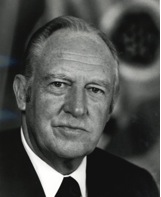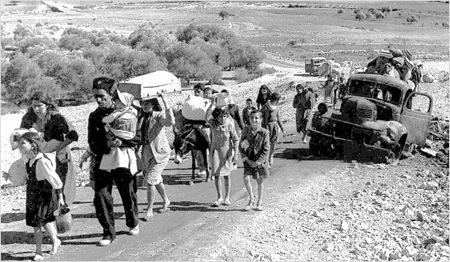(29 October 1969)
Rogers, William. “The Rogers Plan.” Washington, DC. 29 Oct. 1969. Rpt. in The Search for Peace in the Middle East, Documents and Statements 1967-1979. Washington, DC: US Government Printing Office, 1979. 292. Print.
In 1969, two high ranking State Department officials, Joseph Sisco and Roy Atherton suggested to Secretary of State Rogers that the United States go public with the outline of an agreement to the conflict based on private discussions the US had with Egyptians, Jordanians, and Israelis. Those discussions, however, were not with the leaders of the countries, but rather with lower ranking representatives. Sisco told an audience of his peers, meeting in April 1991in Washington, that at the time in late 1969, “the US was getting beaten over the head by the Soviets,” claiming that the US was dragging its feet in trying to initiate Arab-Israeli negotiations. The details of the plan that Sisco and Atherton drafted for eight hours at the State Department, became the Rogers Plan; it was delivered as a speech, and notably was not vetted by Israeli or Arab leaders prior to its public presentation.
The speech called for a “fair solution” to the refugee problem, but did not call for a political solution for the Palestinians, using terms like self-determination or state creation. It offered the establishment of an agreement between Jordan and Israel, but did not mention Syria. The plan did not call for a peace treaty as the outcome of negotiations or a timeframe or stages, or benchmarks in achieving a negotiated outcome. Further, it did not mention by name the West Bank, Jerusalem, or the Golan Heights. It was a US proposal aimed at securing first and foremost an Egyptian-Israeli agreement “following procedures used at Rhodes in 1949,” which in themselves had not been direct talks between the parties, but rather talks through a mediator shuttling between the negotiating sides. It was a plan put forth without pre-negotiations between the parties; it contained no means for either side to test the commitment or intentions of the other.
With no imminent crisis or a peace treaty as the outcome, the Israeli government of Golda Meir rejected the plan almost as fast as it was proposed. With disagreeable content – total withdrawal –and announced without prior consultation, the Israelis had additional reason to reject the Rogers Plan. In 1991, Sisco and Atherton said about the Roger’s Plan, “we consulted with [Israel’s Ambassador to Washington) Yitzhak Rabin, but we did not give them the text in advance; the Israelis as you know are very textural; they wanted the precise language, not paraphrases.”
Remarking in 1991 on how the Roger’s Plan evolved, Atherton recalled that, “the attempt to lay out a blueprint for settlement without detailed engagement of the parties,” was a mistake. And yet, this would not be the last time that the US, without consulting the respective sides or engaging in substantive preliminary or preparatory talks for narrowing differences announced its own outline for a negotiated settlement. Presidents Carter, Reagan, Bush 41, and Obama would each do so in September 1977, September 1982, October 1991, and May 2011 respectively; each time the US encountered resistance from Arab and Israeli leaders who did not want an agreement about content or process imposed upon them.
–Ken Stein, September 2016

The United Arab Republic (U.A.R.) and Israel will agree on a timetable for withdrawal of Israeli forces from U.A.R. territory occupied during the war.
- The state of war between the U.A.R. and Israel will end officially and both sides will abstain from any activity inconsistent with the state of peace between them. This will involve refraining from any acts of aggression and ensuring that such acts by private organizations will not be carried out from their territory. The two sides will refrain from interfering in the internal affairs of each other and will agree that their mutual relationship will be governed by Provisions 3 and 4 of Article 2 of the UN Charter.
- Both sides will agree to establish secure and recognized borders specified on maps. The agreement will include the establishment of demilitarized zones and taking effective measures in the Sharm al-Shaykh area to guarantee freedom of navigation in the Strait of Tiran. Within this framework, secure borders will be established at the international frontier that existed between Egypt and Palestine at the time of the British Mandate.

Figure 2 Gunnar Jarring (shown here at the beginning of his diplomatic career in the 1930’s) was to be a leading figure in the implementation of the Rogers Plan (Public Domain, U.S.) - The two sides, through Rhodes-type indirect talks, will formulate agreement on areas to be demilitarized, measures to guarantee freedom of passage through the Strait of Tiran, and effective security measures and a final settlement of the Gaza Strip.
- The two sides will agree that the Strait of Tiran is an international waterway, and the principle of free navigation will apply to all states, including Israel.
- In exercising sovereignty over the Suez Canal, the U.A.R. will acknowledge the right of ships of all nations, including Israel, to pass freely through the canal without discrimination or interference.
- The two sides will agree to submit to conditions for a fair settlement of the refugee problem similar to the final agreement between Jordan and Israel.
- The U.A.R. and Israel will agree to recognize each other’s sovereignty, political independence, and the right to live in peace within secure boundaries free from threats of force.
- The final agreement will be included in a document signed by the two sides and filed with the UN, the agreement going into effect once the document has been deposited with the secretary-general. The final agreement will provide that any major violation of the agreement by either side will give the other the right to suspend implementation of the agreement, either partially or totally, until the violation has been ended.
- The two sides will agree to submit the final agreement to the UN Security Council for ratification. The United States, the Soviet Union, Great Britain, and France will promise to exert their efforts to help the two sides adhere to the provisions of the agreement.

Figure 3 The Rogers Plan, like U.N. Resolution 242, called for a resolution of the Palestinian refugee problem as part of any Arab-Israeli settlement. (Public Domain)
